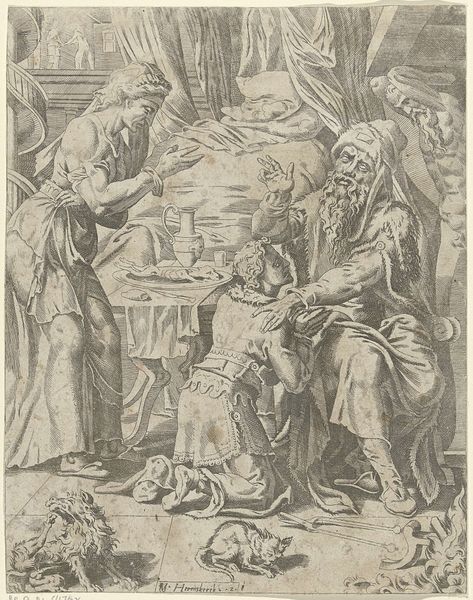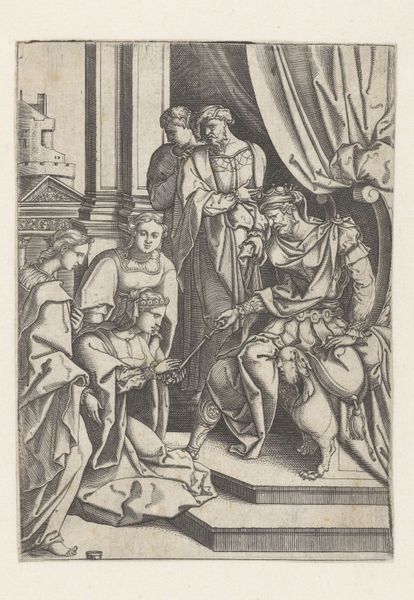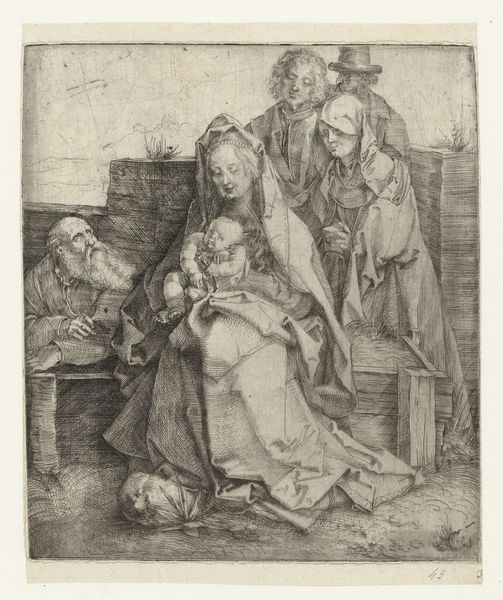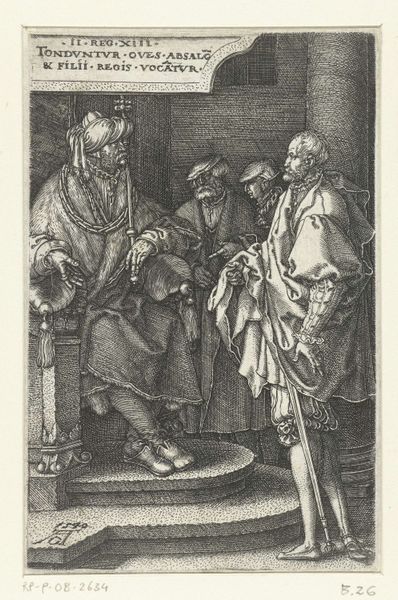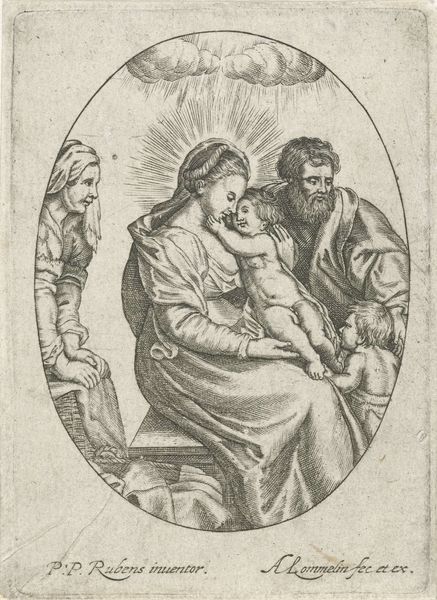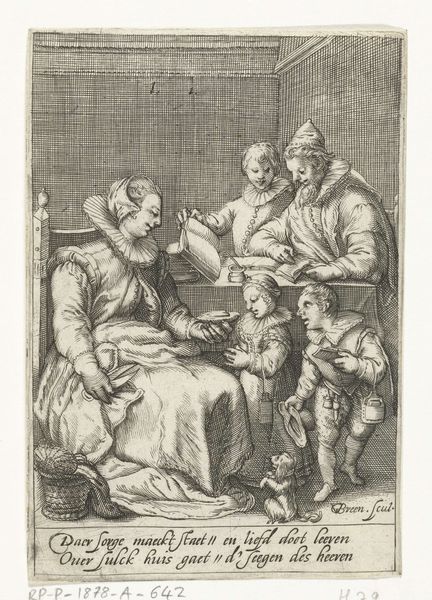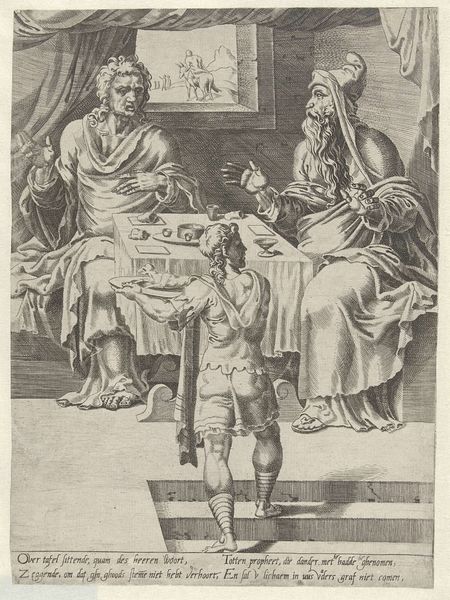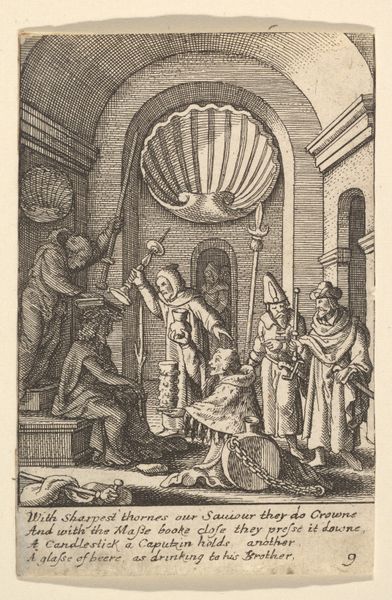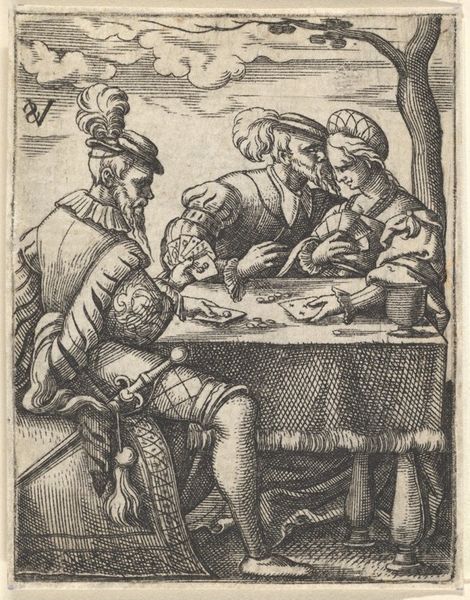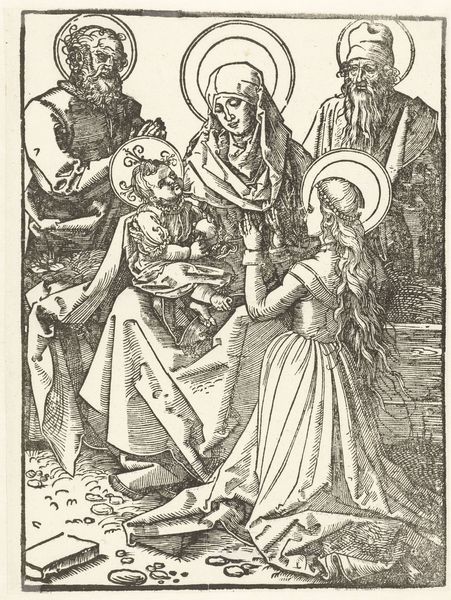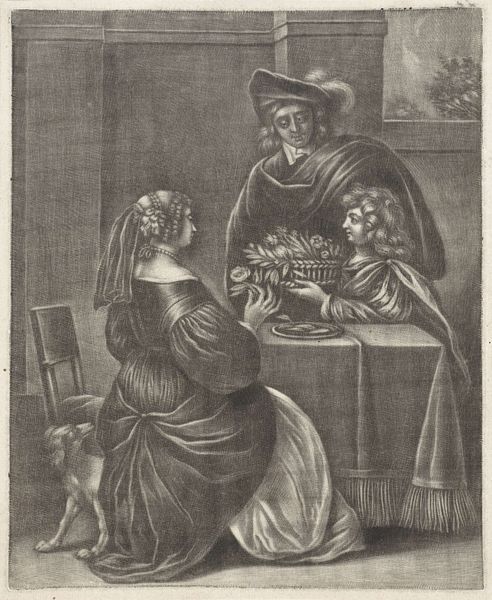
print, etching
#
portrait
#
narrative-art
#
baroque
#
dutch-golden-age
# print
#
etching
#
dog
#
figuration
#
portrait reference
#
genre-painting
Dimensions: height 265 mm, width 215 mm
Copyright: Rijks Museum: Open Domain
Curator: The work before us is entitled "Drinkende dame", made by Jan van Somer in 1676. It's an etching that offers us a glimpse into a domestic scene of the Dutch Golden Age. Editor: It’s striking! The almost photographic detail captured in an etching—especially the woman's luminous dress. But I can't help but see it through a modern lens, that sense of entitled leisure. Who are these people? What is the power dynamic at play here? Curator: These types of scenes were rather popular. Think about it. Genre paintings depicted everyday life but often subtly reinforced societal norms. The woman's act of drinking, seemingly simple, speaks volumes. Is it an act of rebellion or merely the norm for privileged women of the era? The boy proffering a tray could suggest the woman's position as one of privilege. It's difficult to say how this act intersects with race, as there isn't much here. Editor: Exactly, but let's not forget about that looming man in the background also drinking from a tall glass, behind her while the boy is literally serving her. I keep returning to that visual language of service and subservience and considering contemporary issues. It all seems so loaded, the woman consuming, being served, looked at, while the person who is doing labor recedes to a marginal position. Curator: Precisely. Consider also that during the Dutch Golden Age, social commentaries were veiled but omnipresent, and images and their patronage reflected the aspirations of an emerging merchant class and the values they espoused. Editor: I agree. I mean, seeing it now, I also think it opens up complex questions. For whom was this image really made? How was it supposed to function within those specific social and cultural dynamics? How can this "Drinking Lady" prompt new forms of social criticism when revisited in the gallery today? Curator: Well, certainly. When studying art, understanding the artist's intentions allows one to critically interpret and reflect on their place within it and today’s place as viewer. I see its historical import and can critically compare how little things may change. Editor: I think analyzing this etching helps reveal lingering power imbalances. Hopefully, that could open opportunities to reframe conversations and maybe imagine an alternative, more egalitarian scene in a drinking parlor, in art, and hopefully, outside too!
Comments
No comments
Be the first to comment and join the conversation on the ultimate creative platform.
